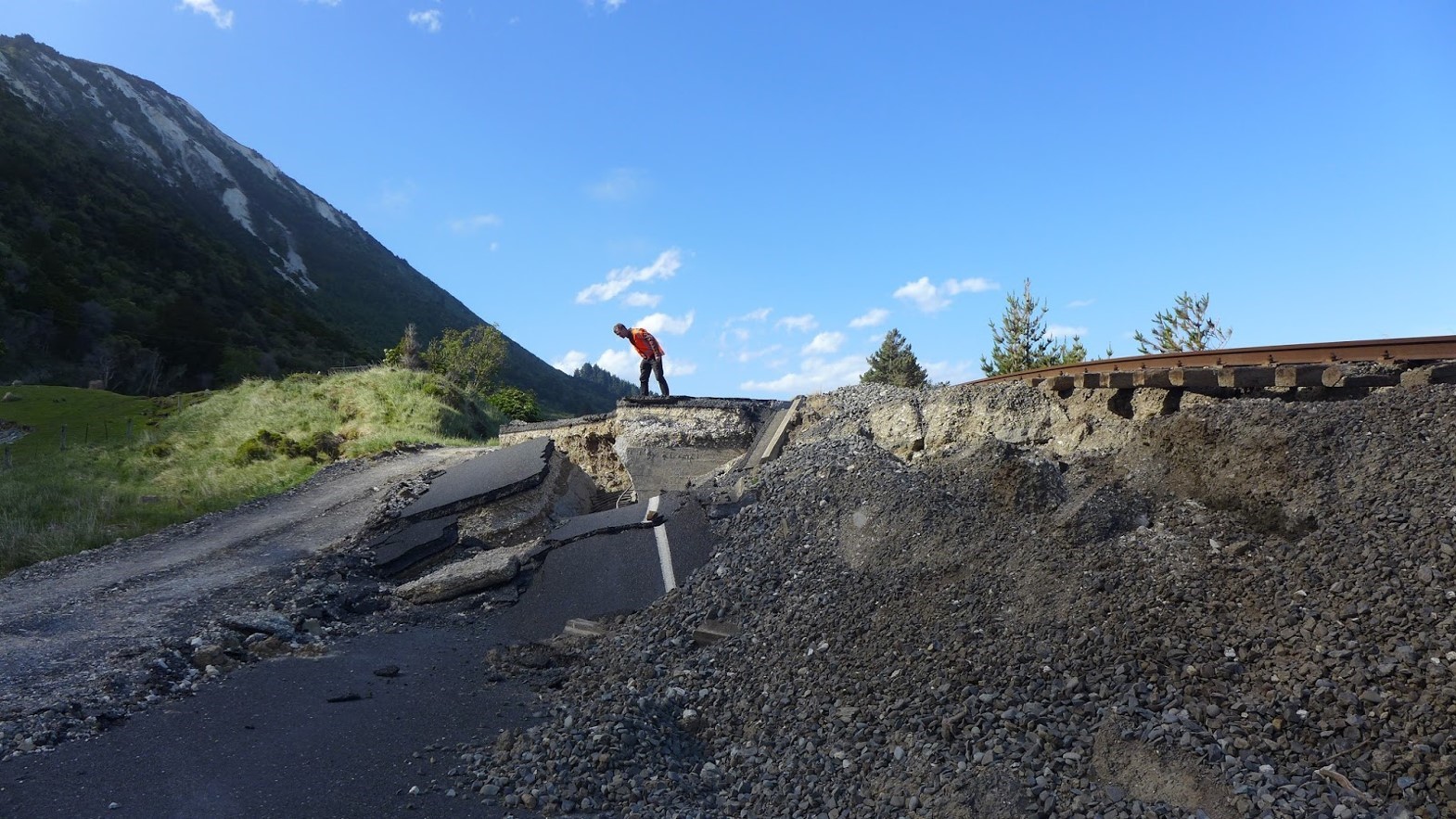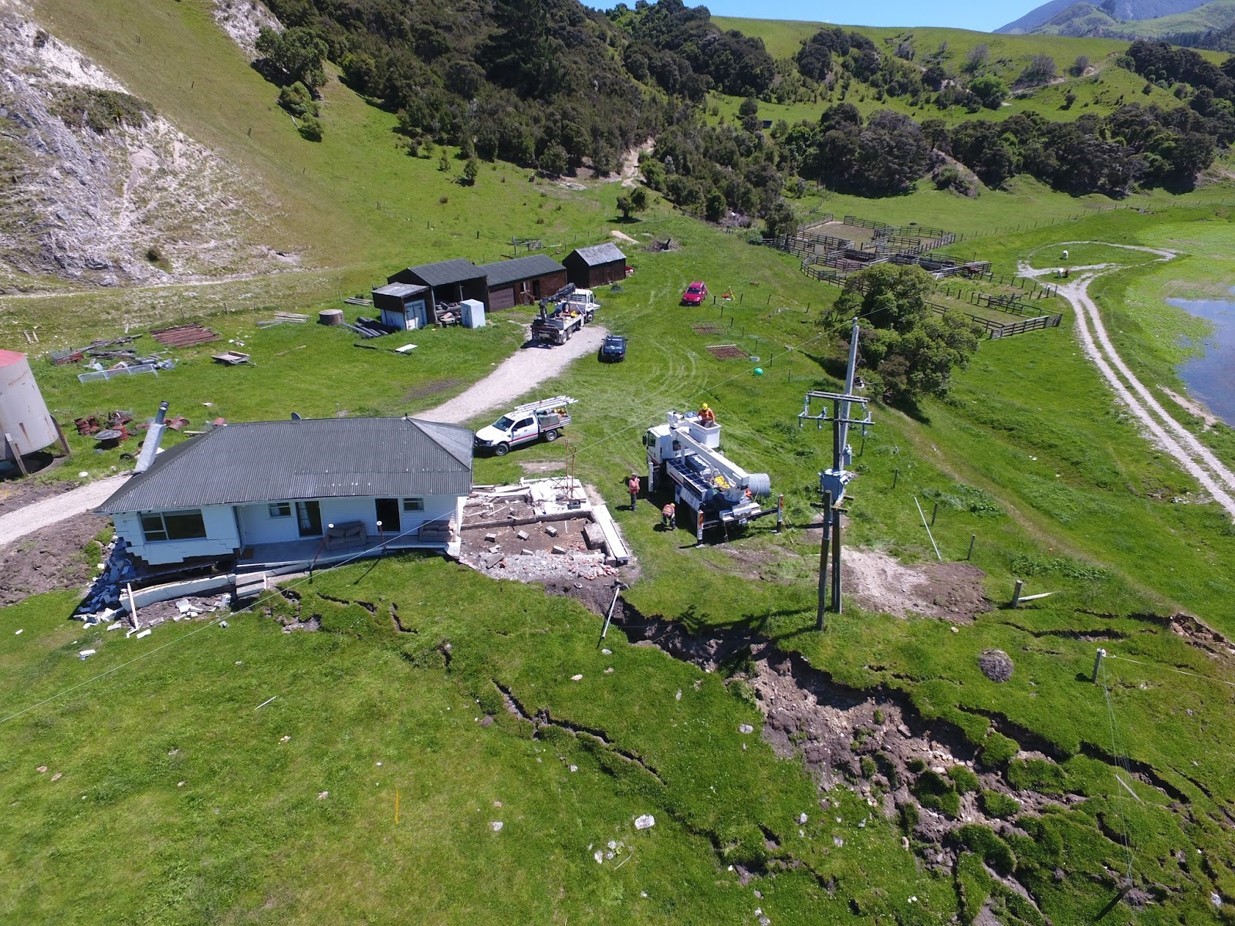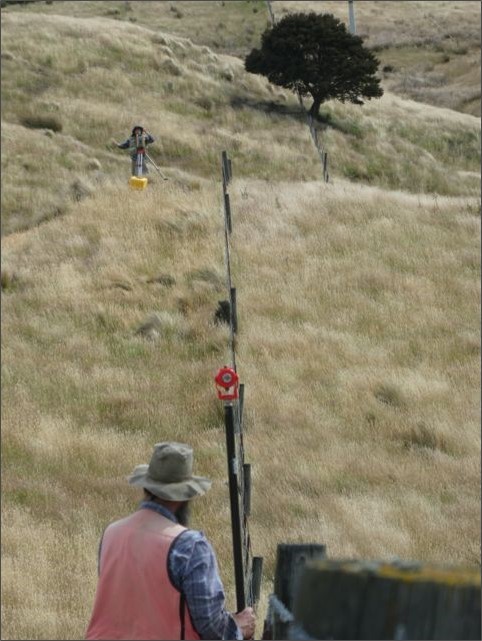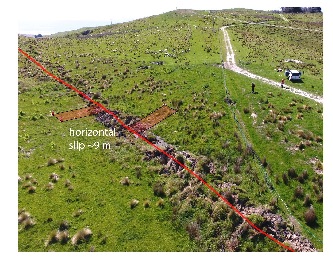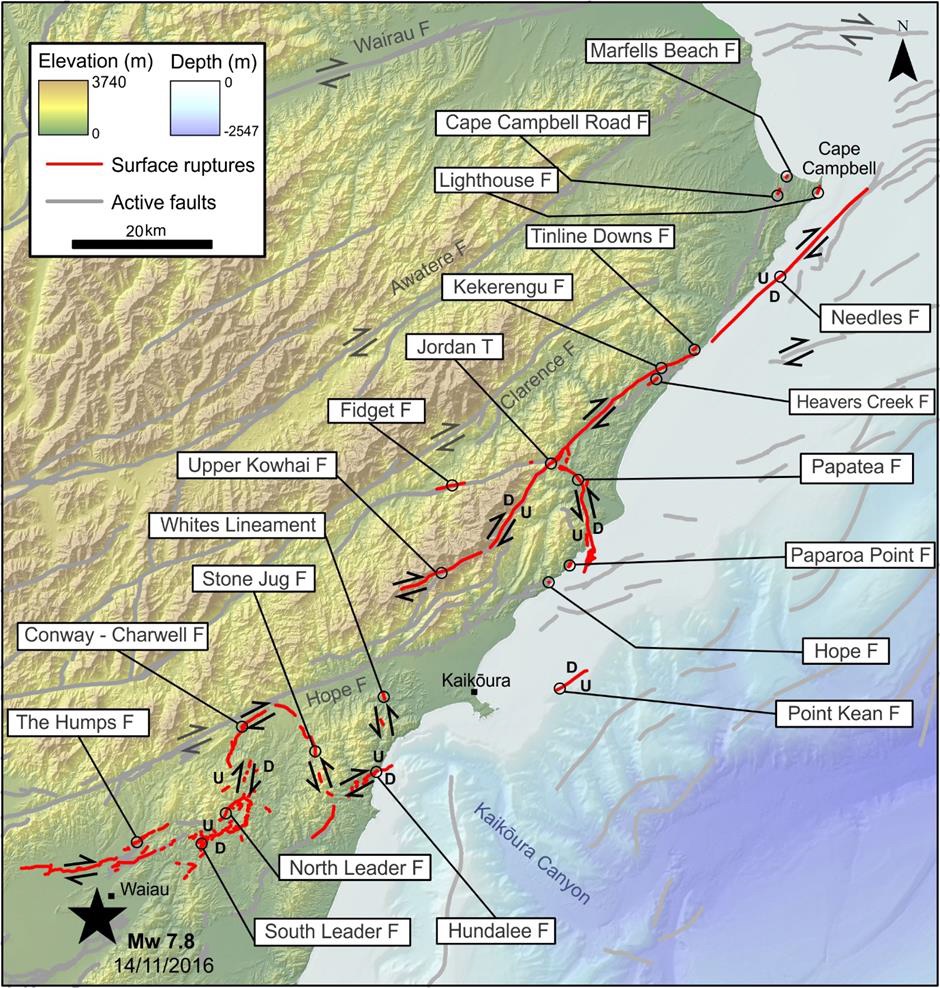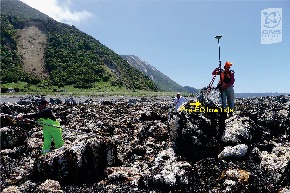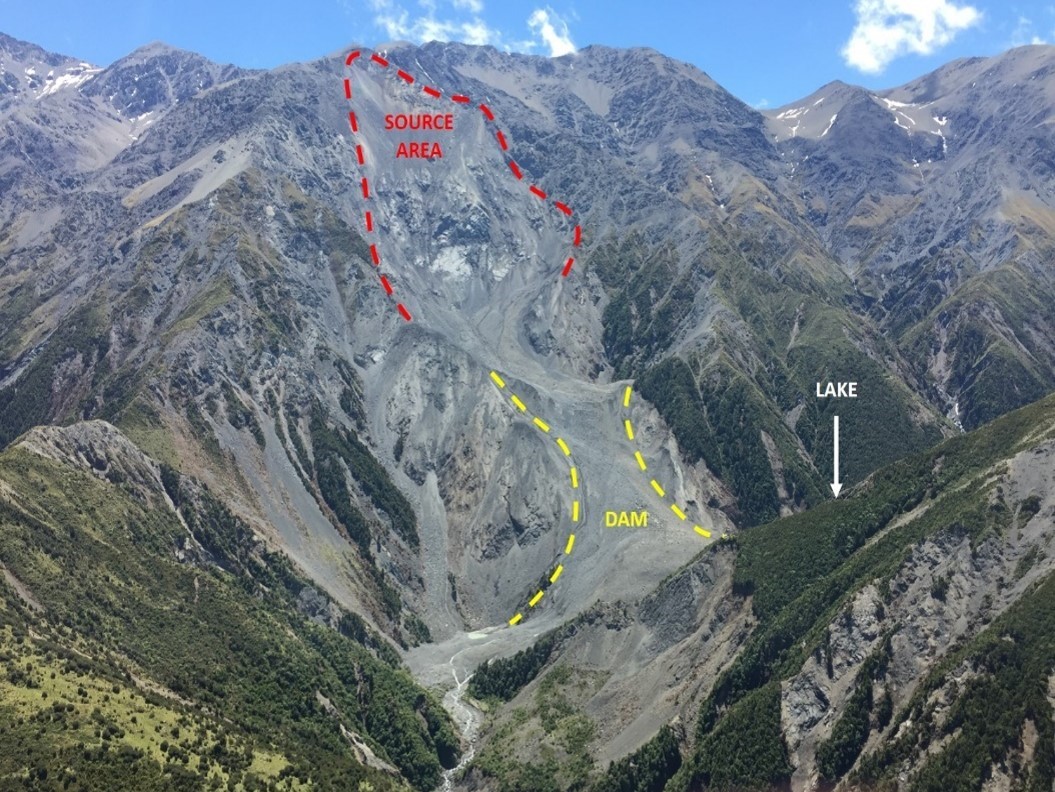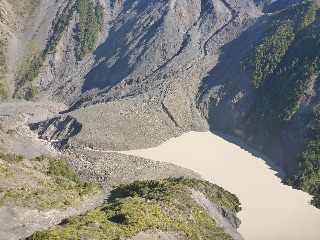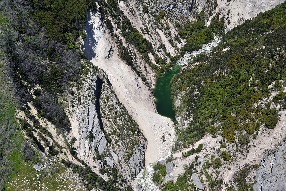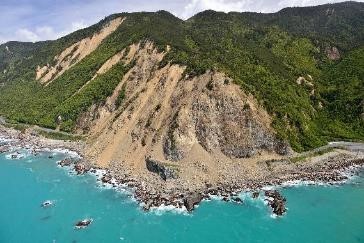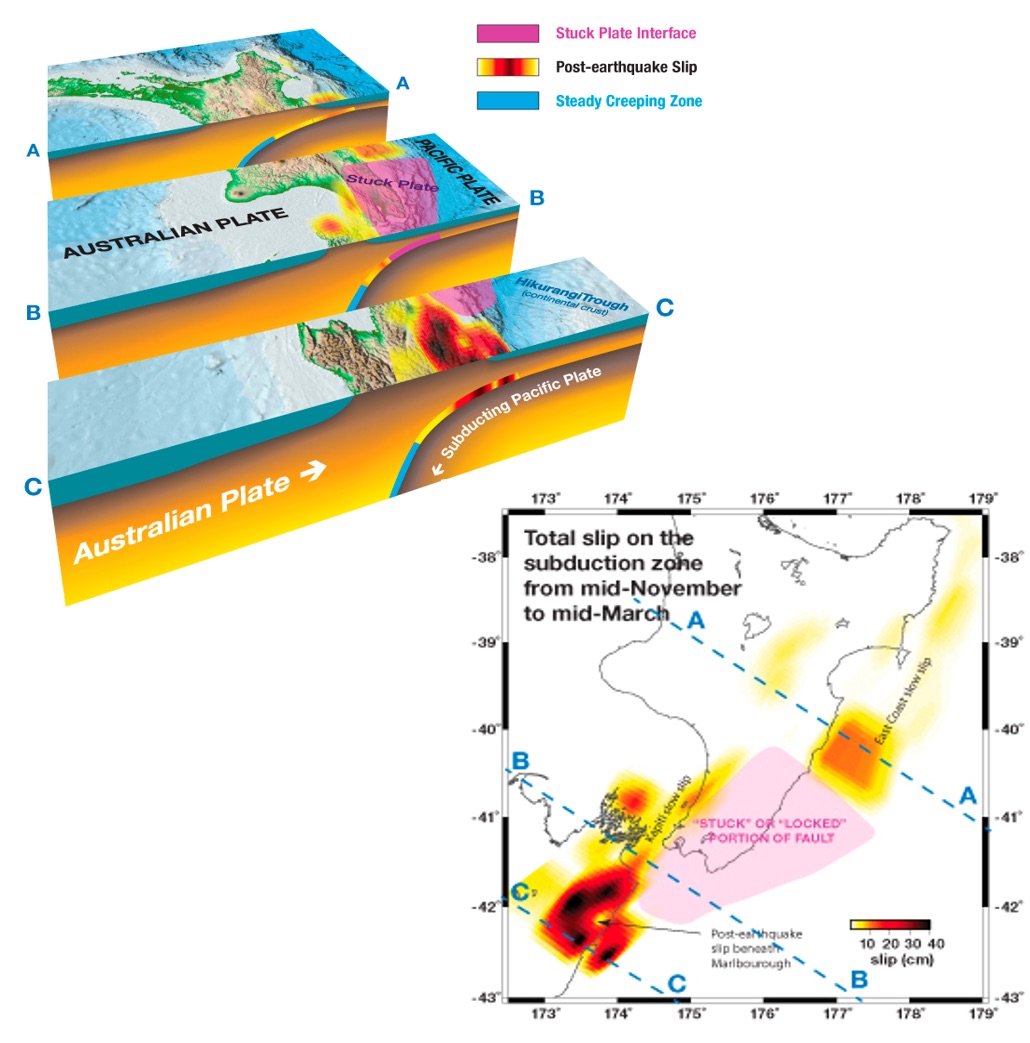M 7.8 Kaikōura Mon, Nov 14 2016
At 12.02 a.m., on Monday 14 November 2016 NZDT, a magnitude 7.8 earthquake struck 15 km north-east of Culverden, North Canterbury, starting near the town of Waiau.
The earthquake was the most powerful in the North Canterbury area in over 150 years and is one of the most complex earthquakes ever recorded with modern instruments (research article).
This visualisation shows the propagation of seismic waves during the 2016 Kaikōura earthquake as well as the tsunami that was triggered.
The earthquake rupture (movement on the faults) propagated south-west to north-east through the North Canterbury and Marlborough Fault areas- essentially "unzipping" along an approximately 180km length of the northeast coast of the South Island (Watching the M7.8 Kaikōura Quake Dominos Fall in Real Time). The rupture lasted nearly 2 minutes in total, and where the faults met the ground surface the ground was displaced, horizontally (sideways) and vertically (up-down) by up to 12 metres.
The impacts of the Kaikōura earthquake were wide-ranging. Thousands of people were affected with significant damage
to transportation networks and other lifeline utilities as well as disruption to the agriculture and tourism
industries (research article, research article).
15,840 Felt Rapid Reports were submitted online in the first hour and our website took a massive 250 million hits in 24 hours (peaking at 35,000 hits per second).
The earthquake and surface rupture involved more than 20 different faults (a world record), triggered the biggest local-source tsunami recorded in New Zealand since 1947,
caused extensive coastal uplift, widespread landslides and landslide dams, as well as slow-slip 'silent' earthquakes.

Bluff station. Kekerengu Fault rupture displacing the road and house by ~10 metres. Photo by Tim Little

Faults
The tectonic setting of New Zealand is characterised by the Pacific and the Australian plate boundary with two subduction systems, the Puysegur in the southwest and the Hikurangi in the northeast. Between these systems is a zone of strike-slip (where the plates slide laterally past each other) and compression, where the plate motion is taken up on a complex network of numerous faults in the northern South Island. The Kaikōura earthquake occurred in an area known as the Marlborough fault system (MFS). Faults in the north section of this fault system (the Awatere, Clarence and Wairau) have slip rates of ~4 to 8mm/yr, while the Hope and Kekerengu faults slip at rates of 20 mm/yr or more. (Most faults don't constantly slip - the slip rate is a measure of the movement on a fault over thousands of years. In reality most faults sit still for hundreds or thousands of years, while the land around them gets pushed and pulled, and then they slip a lot all at once, creating an earthquake.)
Tsunami
Several of the faults that ruptured were submarine and movement of the seafloor caused a tsunami along New Zealand’s east coast that was recorded on a number of sea level gauges (research article).
The first wave arrived within 10 minutes with 6.9m run up measured in Goose Bay. Further south of the Kaikōura region, north facing bays along Banks Peninsula were most affected by the tsunami. Of these, Little Pigeon Bay experienced some inundation (research article).
Overall, the damage along the Kaikōura coast from the tsunami was minor because the tsunami arrived at mid to low tide, much of the Kaikōura coastline was uplifted during the earthquake, and the beaches along the coastline here are steep.
Coastal uplift
Extensive uplift and deformation occurred almost instantaneously over ~110km from Oaro to Lake Grassmere (research article).
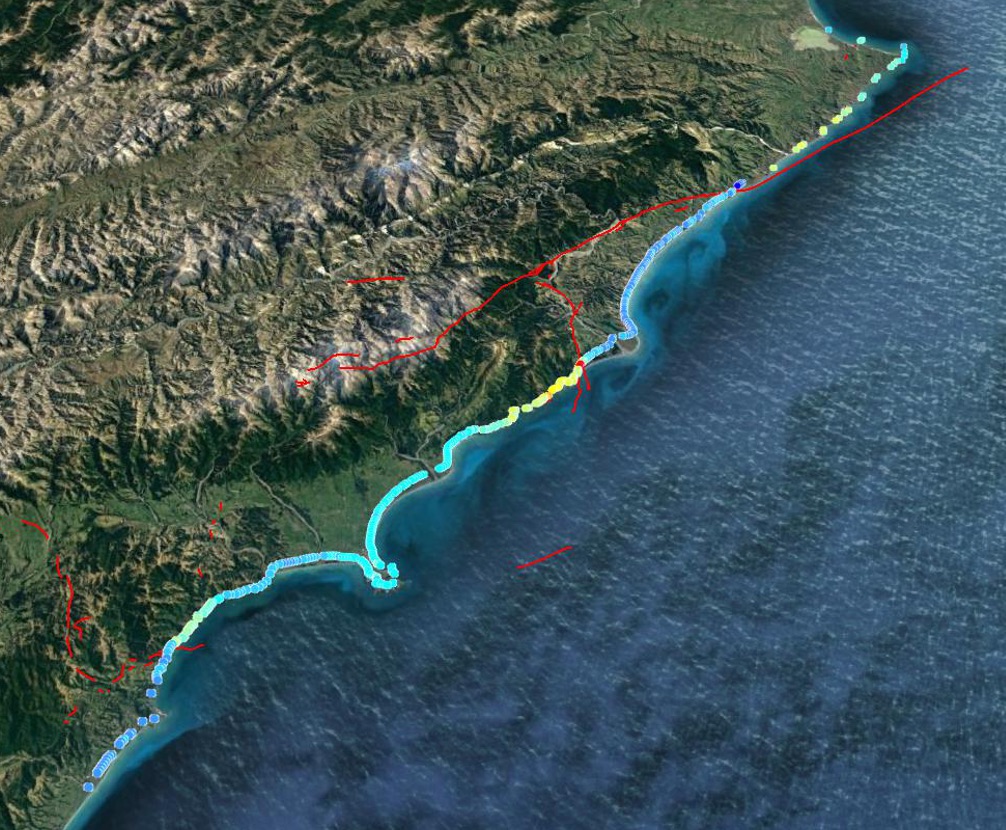
Google Earth image showing the length of the South Island Coastline impacted by the Kaikōura earthquake and subsequent uplift Redlines show the faults. June 2017.

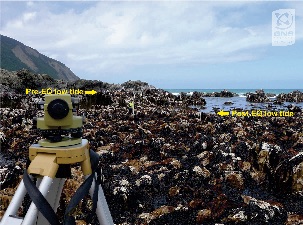
Surveying at a coastal uplift site near Half Moon Bay, on the southern side of the Hope Fault, uplift here is 2.1 – 2.4 m.

Field surveys and comparison of pre- and post-earthquake airborne lidar measurements show variable vertical coastal displacements, ranging from -2.5m to 6.5m. Along many parts of the coast the uplift was evident from decaying subtidal bull kelp (Durvillaea antarctica) on exposed rocky platforms.
Landslides, landslide dams and rock falls
Due to the presence of steep slopes in areas of strong ground shaking over 10,000 landslides occurred in the wider regions of North Canterbury and Marlborough (research article).
A large number of landslides occurred on the coastal cliffs starting just south from Cape Campbell, becoming more intense south of the Clarence River, with several larger (100,000 – 500,000 m3) landslides. This led to the closure of state highway routes and the main railway line (read here).
More than 200 landslides blocked rivers and generated landslide dams. The largest valley-blocking landslide has an approximate volume of 23 (±2) M m3 and the debris travelled up to 2.7 km down slope forming a dam on the Hapuku River.
Slow-slip earthquakes
Slow-slip events describe the episodic slow release of energy (over days to months) that are often observed to occur on large faults where two tectonic plates meet. The slow slip events we most commonly observe in New Zealand occur on the Hikurangi subduction zone, which is the North Island’s major plate boundary, where the Pacific Plate dives or "subducts" beneath the North Island (Hikurangi Subduction Earthquakes and Slip Behaviour). Astonishingly, the M7.8 Kaikōura earthquake triggered large slow slip events along much of the Hikurangi subduction zone, even as far away as Gisborne, ~600 km away from the earthquake. These slow slip events following the Kaikōura earthquake released a large amount of built-up tectonic energy and lasted over the weeks and months following the earthquake.
GeoNet Network additions
Since the Kaikōura earthquake there have been a total of 21 new earthquake monitoring installations. This includes 9 GNSS (Global Navigation Satellite System), 9 strong motion (measures really strong shaking), 2 short-period (for smaller shaking) and 1 repeater (information transfer). Also, the GeoNet team have added 5 power and sensor upgrades at existing sites.
Future aftershocks
More than 18,500 aftershocks have followed since the Kaikōura earthquake (we ran the numbers at 1:52 p.m. on the 10 August 2017). The number of earthquakes generally decrease over time in an aftershock sequence, with spikes of activity and occasional larger earthquakes. The most likely scenario is that the aftershocks will continue to decrease in frequency (and in line with forecasts) over the next year and no aftershock of magnitude 7 or larger will occur. Read here for more information about the Kaikōura aftershock sequence and forecast.
Acknowledgements
Our first consideration during an event like Kaikōura is for everyone impacted. We acknowledge the people of Kaikōura, Hurunui, Marlborough and Wellington areas and thank all of the landowners who permitted our access to their land. Much of the science and understanding that has been achieved from this event would not be without the help of local people.
To our people-focussed team of duty officers, technicians, app and website developers, public information specialist and scientists who have worked tirelessly and under the most stressful conditions: thank you for your dedicated work.
Land Information New Zealand (LINZ) and Natural Hazards Commission Toka Tū Ake (NHC) have been providing us with funding to develop and sustain our GPS network. Because of this valuable network and data, we are able to understand the geological process and inform New Zealanders. Thanks LINZ and NHC! And, thank you to the Ministry of Business, Innovation, and Employment, for helping us fund a large part of the science response to the Kaikōura earthquake.
